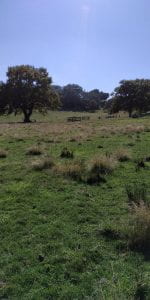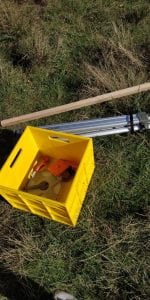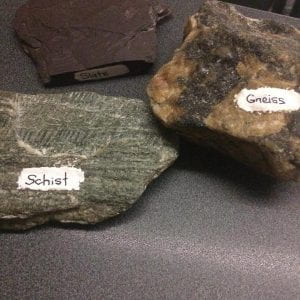So, if you haven’t heard enough about it already, Civil has five papers. But when wanting to learn more about the courses, often times reading the course descriptions can make very little sense given the jargon (I gave up trying to decipher what the topics were and just thought to let fate surprise me). Nor did it satisfy other questions such as: Are there any field trips? What is the difficulty level? What are the highlights and low lights? Hence, this blog post. Let’s proceed with an updated review of Civil’s five papers, shall we?
Civil 210: Introduction to Structures
A previous student blogger described this course as ENGGEN 121 on steroids, and I thought that it was fitting. A lot of the concepts covered in ENGGEN 121, CIVIL 210 will build on. So, analysis of both determinate and indeterminate systems. Think the three equilibrium equations, BMD, SFD, but in more complex situations (such as loads applied on frames). Also, remember the phrase “statistically indeterminate” – where there are more unknowns than the three equilibrium equations? Yes, there’s a way around that. Surprise! But to reassure you, only a section this semester is dedicated to indeterminate systems (it will be explored in greater depth next semester, oops). There’s new concepts introduced as well, such as considering what’s happening internally within a small piece of material subjected to a load (stress and strain from CHEMMAT 150 making a comeback here).
In all honestly, CIVIL 210 is probably the course that’s the most challenging out of the papers this semester for many Civil Engineering students (apparently approximately 90% of students going to the Part 2 Assistance Centre had woes questions relating to Civil 210 content), but I actually enjoyed this course because of its difficulty (hold your pitchforks, please). And I think it’s what drew us all into Engineering in the first place: often you want to bang your head against the wall, curl up into a ball, and cry, because even after pages and pages of working, your answer and the actual answer might as well be in different galaxies. Or you just can’t simply understand so you don’t even have pages and pages of working. But the moment you get it right? The second it all clicks into place? Such an irreplaceable feeling of triumph and satisfaction.
Hang in there! It is possible. I will be sharing my advice (as well as the advice of other Civil Engineering students) on how to navigate CIVIL 210 and other courses in the upcoming post.
CIVIL 230: Fluid Mechanics 1

A relatively new topic – certainly one that isn’t covered in NCEA physics. It can simplistically be divided into two parts: when fluids are stationary (hence, hydrostatics) and when fluids move. There are also other related concepts, such as pumps and turbines (which in reality we are at the very least vaguely familiar with so there is some ease which we can come to grasp with the concepts). There are instances where there is a lot of theory involved and its derivation (I’m looking at you, Reynolds Transportation Theorem) but Colin, one of the three lecturers taking the course, goes through this systematically and saves us students from a lot of confusion.
As mentioned, there are three teaching staff: Colin – a literal godsend; he makes additional recordings in his own time to help us better understand certain concepts (#blessed). Heide, who delivers her lectures in simply (a majority of the time at least) and sometimes with the occasional use of an everyday object as a prop, and Klaude, who goes through each problem step-by-step and explaining his thought process along the way to ensure that everyone is on the same page.
A definite highlight would be the way this course is structured and the support available, from the timely Piazza answers to the additional recordings Colin does to help us better understand certain concepts (#blessed).
CIVIL 201: Land information systems



Civil 201 arguably may be the most practical course out of all the others and broadly covers two sections: engineering surveying and transportation alignment surveying. Engineering surveying involves using different methods to calculate the area of a closed traverse (can imagine it as a section of land from a top view), levelling – determining the elevation of a structure or a particular point with reference to a particular datum, and setting out circular curves (think a bend in a road – how will that be laid out precisely).
For transportation surveying, it is a much smaller topic and involves learning how to draw and interpret different sections (perspectives) of works such as roads and railways, which is important when planning and calculating the volume of earthworks (soil) when a site is cleared to begin the construction of a new road, etc.
It is a practical course since there are two labs dedicated to learning how to use surveying instruments and completing field work and a whole surveying day out as part of a group project, applying all the knowledge learned in the two labs (this year it was in One Tree Hill). As with anything that requires to be done within a short period of time and can’t be technically redone, the surveying day out is a stressful process, but is also fun at the same time since you get to be out and not stuck in lectures as you normally would be. The department also provided amazing gourmet pizzas and drinks – so there’s that at the very least.
Video from surveying day:
If you felt highly supported and blessed during CIVIL 230, well unfortunately this course is somewhat lacking in that regard – particularly with Piazza. I also remember I sent an email asking if it’s possible that I am able to attend a different day for the since I had a clash with one of the assessments for my other conjoint paper. Long story short, they never replied. Hopefully this improves in the following years based on the feedback.
CIVIL 220: Introductory Engineering Geology
CIVIL 220 has a reputation for being the most content-heavy course, and it is. It can roughly be divided into three key sections: 1) types of geologic materials, how it forms, its physical characteristics and engineering properties, 2) soil properties and classification, and 3) natural hazards (landslides, earthquakes, volcanic eruptions) and how to mitigate these.
Despite the sheer volume of information one will need to remember and process, the course content is arguably the most straight forward.
Like CIVIL 201, there is also a day out in the second half of the semester – in this case it is to the beach. You have to fill out a worksheet filled with various questions relating to the types of rocks present and the potential hazards, drawing on the knowledge learned throughout the semester. It’s a relatively fun day out during the weekend for a couple of hours – it isn’t a full day though unlike CIVIL 201’s field trip.
ENGSCI211: Mathematical Modelling 2
A core paper across all the engineering disciplines, ENGSCI211 is essentially a step up from ENGSCI111. That is, it builds on the concepts introduced last year. A key topic that ENGSCI211 delves more into is statistics, unlike in ENGSCI111, which was funnily very polarising with Engineering students and can sometimes draw very reluctant and disgruntled expressions, especially from those who haven’t taken statistics (which is the vast majority). However, Kevin, the lecturer taking the statistics section, teaches from the very basics – so don’t fret.
Actually, all the teaching staff: Peng, Kevin, Colin, are fantastic, particularly Peng (this is actually a common opinion – see the screenshot of the poll created on the 2019 Engineering Cohort page). The lecturers know the content really well, and at least for me I found that they explained the concepts really well. Piazza is also very active and replies to questions prompt and detailed.
That’s all for today! Hope you’ve learned a little bit more about Civil’s five papers.
Until next time!



